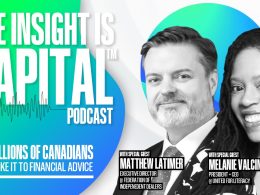by Doug Drabik, Raymond James
Doug Drabik discusses fixed income market conditions and offers insight for bond investors.
Much attention has been drawn to the yield curve and whether short term rates are higher than long term rates (inverted curve) largely because the yield curve has been among the most accurate indicators of a future recession. To complicate the observation, many economists/analysts use the 2 year vs 10 year Treasuries as their point of reference while others use the 3 month Bill versus 10 year Treasury in their comparison. It is not unusual that timing of when they invert is months apart. Furthermore, the curve has inverted before and not resulted in a recession. Although the 2 year-to-10 year inverted intraday, the yield curve points have yet to close inverted. Over the last two trading days, they have flirted with being inverted and ended virtually with the same yield. The trend of their spread is narrowing as over the last year it averaged ~19 basis points (bp), during the month of August it averaged 6 bp and over the last two weeks the average spread has been a mere 3bp.
Conversely, the 3 month Bill-to-10 year Treasury have closed inverted every day but one since May 23rd (95 days). It is important to recognize that historically there is a delay between an inverted curve and a start of a recession. The delay time is subject to whether it is counted from any inverted day to the recession or from when the curve inverts for a significant amount of consecutive days. So there is a degree of subjective analysis that goes along with using the yield curve as a predictor and there are other sets of data that need to be considered, the least of which is not consideration for the next presidential election along with political motivations. Still, we cannot dismiss the significant signal that the 3 month-to-10 year Treasury points indicate that investors are cautious about lower future interest rates.
That’s the more significant takeaway. Valiant arguments can be made on timing of the next recession or which set of yield curve points to use, but the important takeaway is that all indications are that rates are headed lower. Domestic markets can be and are influenced by global rates, economics, and politics.
Germany’s recent 30-year auction of a 0.00% coupon bond showed weak participation falling short of their target issuance and ending with an average yield of -0.11%. The resistance will likely do little to the massive European movement toward further economic stimulus. The continued downward trend of inflation and shrinking European economic activity has the ECB poised to not only cut interest rates (probably on September 12th) but to reinstate large scale asset purchases. The largest European economy, Germany, contracted last quarter and they are considering boosting budget spending as things worsen. It is highly likely that the U.S. will have little choice but to attempt to keep U.S. interest rates and the dollar in a competitive position with the likes of Europe and Asia. The bottom line, expect domestic interest rates to continue to trend downward and do not sway from long term fixed income investing. We are in a market of return of principal, not return on principal.
There is a lot of noise and more volatility in the markets than we have had in years. Many fixed income investors’ goal is to not lose the wealth they have accumulated. Low interest rate environments can entice investors to venture into products or strategies designed for growth rather than maintain the discipline to protect principal. Lower interest rates are not an exception to practicing disciplined investing but rather a time when it is critical to maintain appropriate allocation of asset classes. Don’t be the investor that couldn’t see the forest for the trees.












